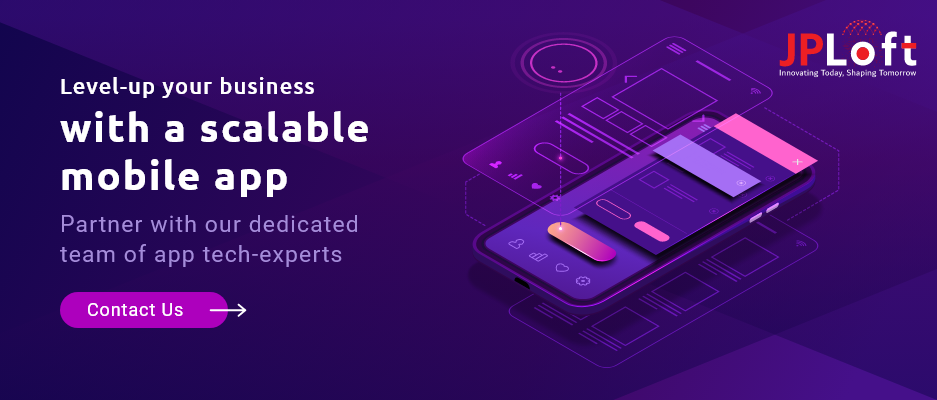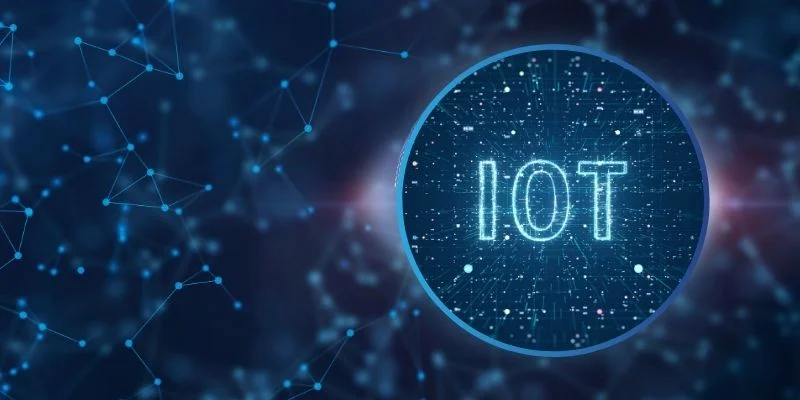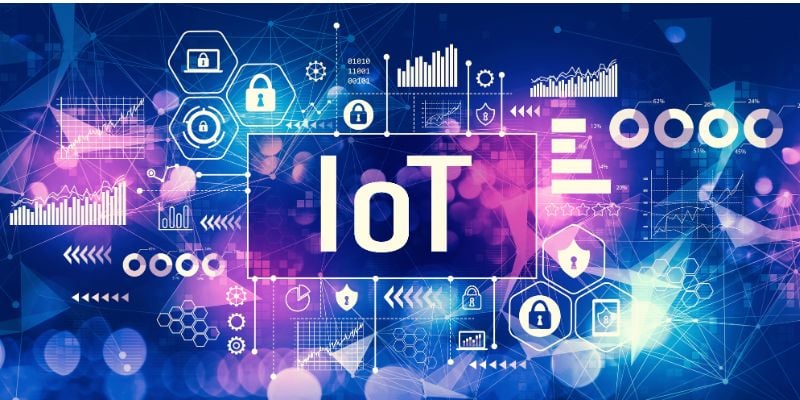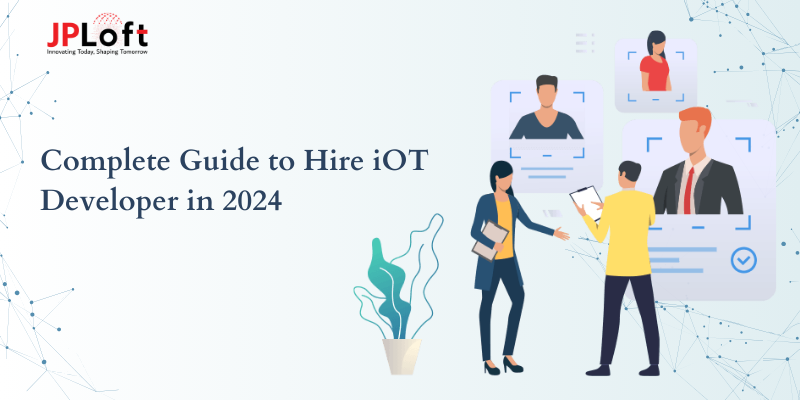Technology's rapid evolution has ushered in an age in which connectivity stretches far beyond traditional devices and gives rise to the Internet of Things (IoT). IoT has profoundly impacted web development, revolutionizing how users experience and navigate the digital landscape.
As more devices connect, web development companies find themselves at the vanguard of an unprecedented shift.
Impact of IoT in Web Development is considerable, offering developers unprecedented possibilities beyond conventional boundaries. Web designers now face the formidable task of harnessing IoT to produce dynamic and responsive website applications.
Web development and IoT combine seamlessly, creating seamless connectivity among devices for unique user experiences and improved functionality. Real-time data exchange creates interactive web solutions capable of real-time results.
Web development companies are quickly realizing they must adapt to this paradigm shift. Demand for IoT-driven web apps has skyrocketed, forcing developers to explore novel frameworks and technologies.
Integrating IoT into website development enhances user experiences and offers businesses opportunities to leverage data-driven insights for strategic decision-making.
The Growth of IoT in Web Development
IoT adoption within web development has seen tremendous expansion, which sheds light on critical aspects and challenges associated with IoT in tandem with web programming languages.
Growth of Connected Devices:
A clear indicator of IoT development on the web is its rapid spread to connected gadgets from smart homes and wearables through industrial machinery and healthcare equipment - evidenced by skyrocketing numbers of interlinked gadgets like smart homes and wearables and healthcare devices that use IoT connectivity.
This surge has resulted in an unprecedented shift in how web developers approach application development, necessitating them to design interfaces that seamlessly interact with diverse devices.
Increased Demand for Responsive Web Design:
With so many devices accessing websites and applications online, responsive web design has become more essential than ever. Web developers now face the challenge of designing sites and applications that seamlessly accommodate different screen sizes and resolutions.
As IoT expands, its proliferation underlines the significance of responsive design - providing optimal user experiences across devices ranging from smartphones and tablets to refrigerators and thermostats.
IoT-Driven Data Integration:
Internet of Things devices generate an overwhelming volume of data that must be managed efficiently for analysis, with web developers responsible for designing robust systems capable of handling and processing it efficiently. Devices continuously exchange their information through web development languages like NodeJS or Ruby on Rails, facilitating this exchange and building the necessary infrastructure to integrate processes and analyze this stream.
Security Challenges and Solutions:
IoT introduces various security risks when applied to web development, increasing attack surface size and developers' responsibility to prioritize appropriate safeguards for their clients' devices. As IoT proliferation spreads in web development projects, developers must prioritize precautions that prevent attacks as often as possible in their work practices.
IoT applications must utilize secure encryption, authentication, and authorization mechanisms that protect user data and connected devices. Web development languages play a vital role in creating secure solutions that safeguard both the devices involved as well as user accounts.
Development Frameworks Tailored to the IoT:
New web development frameworks have been developed to address the unique challenges of IoT. These frameworks are specifically designed to create applications for interconnected devices. These frameworks aim to speed up the application creation while providing specific features tailored for interlinked devices.
Developers can utilize these frameworks to facilitate rapid IoT development while maintaining ecosystem compatibility.
Interoperability Challenges:
IoT devices running different protocols and communication standards have created a complex ecosystem. Web developers need help to ensure interoperability among them all.
Choose web development languages supporting various communication protocols to facilitate seamless integration and intercommunication among IoT devices.
Edge Computing for Improved Performance:
As IoT data grows exponentially, traditional cloud-based solutions may become overwhelmed with IoT-generated information and experience performance bottlenecks. Edge computing offers a practical solution, processing information closer to its source on edge devices and improving overall performance.
Web developers must adjust to this paradigm shift by choosing web development languages that facilitate edge computing for enhanced performance and reduced latency in IoT applications.
Integration of AI and Machine Learning:
Web developers are taking an increasing role in applying artificial intelligence (AI) and machine learning (ML). Web designers incorporate AI/ML algorithms in IoT devices' software to analyze large amounts of data generated by IoT devices for analysis and uncover meaningful insights from this massive body of knowledge generated.
Selecting web development languages is pivotal in successfully implementing complex algorithms for IoT applications and making development faster and smoother.
Role of Web Development Languages:
Web development languages serve as the cornerstones for creating IoT applications, with popular languages like JavaScript, Python, and Java widely employed for front-end interface development and server logic implementation for IoT apps.
These languages enable developers to meet the diverse demands associated with interconnected devices.
JavaScript for Front-End Development:
With its widespread adoption as front-end development, JavaScript is essential in producing dynamic user interfaces for IoT apps.
React, and Angular are excellent frameworks to further extend JavaScript's capacity for developing user-friendly IoT device interfaces, making these scripts even more capable.
Python for Data Processing and Analysis:
Python's ease-of-use and versatility make it a favorite among web developers working on IoT. Particularly suitable for data processing and analysis tasks generated from interconnected devices, its library ecosystem (Pandas and NumPy among them) enhances its capability to manage IoT-driven data integration.
Java for Robust Backend Development:
Java remains one of the go-to languages in web development, particularly for building robust and scalable backend systems. Its object-oriented programming capabilities shine through in IoT projects that depend on data integrity and reliability for optimal operation.
Spring framework is used extensively in developing IoT applications that require secure server-side logic with scalability in mind.
Read More: The Role of IoT in Mobile App Development
What is the role of IoT in Web Development?
The impact of user interactions on web architecture has all been essential to its growth and evolution.
Real-Time Data Processing and Analysis
IoT devices collecting and transmitting continuous streams of real-time information present web developers with both an opportunity and challenge: they now need to process vast quantities of real-time information in real-time.
Due to this phenomenon, sophisticated web applications capable of processing and analyzing data instantly have emerged - providing users with instantaneous insight and aiding decision-making processes.
Responsive and Adaptive Design
IoT devices range in shape and size, from smartphones and wearables to smart refrigerators and industrial sensors - which makes designing responsive web interfaces for these different device specifications quite tricky for developers.
The impact of IoT development is evident through websites and applications designed to adjust to different screen sizes, resolutions, and input methods to offer users an exceptional user experience across its ecosystem.
Security Challenges and Solutions
As more devices connect, so does the surface for potential security breaches, presenting Web developers with new security issues brought on by IoT, such as device vulnerabilities, data privacy considerations, and secure communication protocols that must be in place to operate these connected devices effectively.
IoT's impact on web development extends beyond simple connectivity to include implementing robust security measures like encryption, authentication, and authorization to protect data and user interactions.
Proliferation of Application Programming Interfaces
The IoT ecosystem relies heavily on seamless communication among connected devices, which has led to an explosion of Application Programming Interfaces (APIs). Web developers now face developing APIs to facilitate data exchange between web applications and IoT devices.
Interconnectivity between devices enhances web apps' functionality and creates opportunities for developing novel solutions by taking advantage of all available intelligence across devices.
Improved User Experiences through Personalization
IoT devices generate vast quantities of data related to user preferences, behaviors, and interactions, providing web developers with abundant material they can utilize to create more tailored user experiences for end users.
From adaptively altering content based on user preferences to providing location-based services, IoT's impact on web development can be seen through hyper-personalized sites and apps aimed at more engaging experiences for individual users.
Scalability Challenges and Cloud Computing Integration
IoT devices generate vast volumes of data, requiring scalable infrastructure. Web developers often turn to cloud computing services as solutions to address scaling concerns efficiently.
Impacting web development, Internet of Things applications have caused web developers to shift toward cloud architectures for web development projects, providing developers with more flexible and scalable cloud platforms for IoT applications.
Innovative User Interfaces and Voice Interaction
With the advent of IoT came an evolution in user interface design beyond conventional screens and keyboards - voice-controlled interactions, gesture-based interfaces, and augmented reality are now integral parts of web development and have revolutionized user interactions beyond traditional input methods.
IoT enabled developers to explore innovative ways of connecting their applications with users that transcended conventional methods for input.
Effective Energy Management and Sustainability
IoT is invaluable in driving sustainability by providing effective energy management. Web developers make a meaningful, impactful contribution by designing applications that allow users to monitor and control energy use through connected devices.
Integration of IoT into web development facilitates the creation of connected homes, buildings, and cities where web-based interfaces equip individuals to make eco-conscious choices.
Data Visualization and Interpretation
Internet of Things devices produce large and varied amounts that are sometimes difficult for web developers to comprehend; they have adopted advanced data visualization techniques into their apps to address this challenge.
With IoT at play, web developers are using advanced visualization techniques to create visually engaging yet easily understandable representations of information so users can gain valuable insight faster than before.
Progressive Web Applications (PWAs)
Progressive Web Apps (PWAs) are at the vanguard of Internet of Things development, offering seamless experiences across devices through advanced features from both web and mobile apps.
PWAs that integrate IoT can leverage device capabilities like sensors and location services for enhanced functionality and offline functionality, creating a more flexible user experience and offering improved features and accessibility for their users.
Tips to Create an IoT App from Scratch
Tips and insights into create an iot app from scratch success and its transformative effects on web development are provided here.
Define Clear Objectives
Before initiating any development work on an IoT app, its objectives must be defined clearly, and measurable goals must be set for its development process.
Establish the issue or need that will be fulfilled and set tangible milestones - improving industrial efficiency, increasing user convenience, or collecting and analyzing data, among some potential applications - this vision will guide development efforts and aid their creation.
Select a Suitably IoT Platform
Selecting an ideal IoT platform is critical for the success of any app, considering factors like scalability, security, device compatibility, and data management. Popular platforms for this purpose are AWS IoT, Microsoft Azure IoT, and Google Cloud IoT; compare features before choosing which aligns best with your project requirements.
Prioritize Security
Security should always take precedence during IoT app development. With devices continually exchanging sensitive data, employing robust security measures becomes critical. Utilize encryption protocols, secure communication channels, and authentication mechanisms to safeguard data integrity and user privacy - then regularly upgrade these measures in light of emerging threats or vulnerabilities.
Create an Engaging Interface
The user interface (UI) is instrumental in any successful app; IoT applications are no different. Create an intuitive and user-friendly UI that enables users to seamlessly interact with connected devices while prioritizing simplicity, clarity, and responsiveness for an enjoyable user experience.
Interoperability in IoT development is essential; devices from different manufacturers and ecosystems must communicate effectively. Adopt industry protocols like MQTT or CoAP for seamless device communication to maximize flexibility and scalability within your IoT ecosystem.
Effective Data Management
IoT apps generate vast quantities of data, and effectively managing it is vital to unlocking insights. Employ practical storage and processing mechanisms that can handle its volume, velocity, and variety before turning to cloud solutions as an affordable and scalable way of keeping this information accessible and safe.
Leverage Cloud Computing
Cloud computing is at the core of many successful IoT applications. Cloud platforms provide essential infrastructure for storing and processing data, conducting real-time analytics, remote device management, and device health management - improving scalability, flexibility, and accessibility of apps in general.
Implement Edge Computing
Cloud computing remains vital, but edge computing has proven incredibly useful when developing IoT technologies. Edge computing entails processing data near its source to reduce latency and aid real-time decision-making processes.
Implementing edge computing into your IoT app can improve its efficiency and responsiveness in situations requiring immediate data processing.
Thorough Testing
Before deploying IoT apps, testing should always be a top priority to identify potential issues before deployment. When conducting comprehensive IoT app tests for functionality, security, and performance.
Simulate real-world conditions to test and ensure the reliability and robustness of your application under various environments. Automation tools streamline the testing process, allowing them to quickly identify vulnerabilities.
Continuous Monitoring and Updates
IoT development is an ongoing journey; continuous monitoring is vital to detect anomalies, optimize performance, and address evolving security threats. Use tools that offer real-time insights into your IoT ecosystem's health, performance, and security status as you regularly update new features, bug fixes, or enhanced protection measures for your app or OS.
How Much Does Custom Web Development Cost?
Custom web development costs vary significantly based on various factors, including project complexity and platform choice. Businesses who wish to develop custom sites must carefully consider both popular platforms, WordPress and Shopify, when budgeting for custom development costs.
WordPress, an open-source content management system, offers flexibility but requires extensive customization for specific functionalities. WordPress website development costs typically range between $5,000 to over $30K, depending on features and design complexity requirements.
Shopify's dedicated e-commerce platform simplifies development for online storefronts; creating custom features may cost between $10,000 and $50,000, depending on the complexity of desired features.
Influencing factors relating to custom web development costs include design complexity, e-commerce capabilities, integrations with third-party services, and ongoing maintenance fees; hiring experienced developers may increase prices.
Conclusion
Internet of Things (IoT) technology in web development has opened the doors for more excellent connectivity, efficiency, and innovation in our daily lives. IoT technology has changed how we interact with the digital world and created unprecedented opportunities for businesses and individuals.
IoT's impact on web development can be seen through its ability to link devices seamlessly. It creates an Internet of Things (IoT) network that facilitates real-time communication and data exchange among devices - leading to responsive and dynamic apps that cater to changing user requirements.
As the Internet of Things-connected devices continue to proliferate, web developers face the daunting challenge of designing platforms capable of harnessing and deciphering vast quantities of information produced by these interlinked devices.
Web Development Company has emerged as crucial agents of the technological revolution, playing an essential part in designing and implementing Internet of Things-driven solutions. Web developers play an instrumental role in creating user-friendly interfaces for IoT solutions while guaranteeing data transmission security between devices and optimizing web applications to achieve maximum performance.
FAQs
1. What is the impact of IoT in web development?
The impact of IoT in web development is immense as it enhances user experiences by facilitating real-time data exchange among devices resulting in more interactive and dynamic web apps.
2. How does IoT impact security issues associated with web development?
Internet of Things Web Development can create new security challenges due to increased device connectivity. Developers must implement stringent safeguards to protect data integrity and maintain user privacy.
3. Can Internet of Things technologies be integrated seamlessly into existing web applications?
Internet of Things technologies can easily be integrated into existing web apps through APIs and frameworks, allowing developers to leverage connected device capabilities without significant overhauls.
4. Can Internet of Things technologies enhance user engagement on websites?
The Internet of Things (IoT) improves user engagement by offering customized experiences based on individual behaviors and preferences. Web developers can leverage IoT data to tailor content, notifications, and services based on user behavior and preferences.
5. How will implementing IoT impact website performance?
IoT in web development can positively affect performance when properly managed and optimized. While IoT may introduce additional data traffic, efficient coding practices and scalable architectures can mitigate any detrimental effects on website performance.
6. Are any specific programming languages recommended for IoT web development?
No specific programming language is mandated for IoT development on web platforms; however, languages like JavaScript, Python, and C++ are often employed depending on particular requirements and device compatibility.
7. Can Internet of Things technology be utilized by e-commerce websites, and what advantages does this afford them?
IoT can revolutionize e-commerce by providing real-time inventory tracking, personalized shopping experiences, and efficient supply chain management, leading to improved customer satisfaction and smoother business operations.
8. What will be the impact of the Internet of Things on the scalability of Web applications?
The Internet of Things can increase scalability by seamlessly integrating increasingly connected devices. Developers can design scalable architectures that accommodate the increased data generated by connected devices.
9. What obstacles must web developers overcome when incorporating IoT technologies into their projects?
Challenges associated with data security include managing large volumes of real-time data and supporting multiple devices compatible with each other, among others. Addressing these obstacles requires extensive planning and adherence to best practices.
10. How has the Internet of Things in Web Development contributed to the advancement of Smart Cities?
The Internet of Things (IoT) is pivotal in creating Smart Cities by connecting services like traffic management, waste disposal, and public safety to devices connected via interconnection. Web development is essential in providing user interfaces and platforms to manage and oversee these intelligent systems.















Share this blog